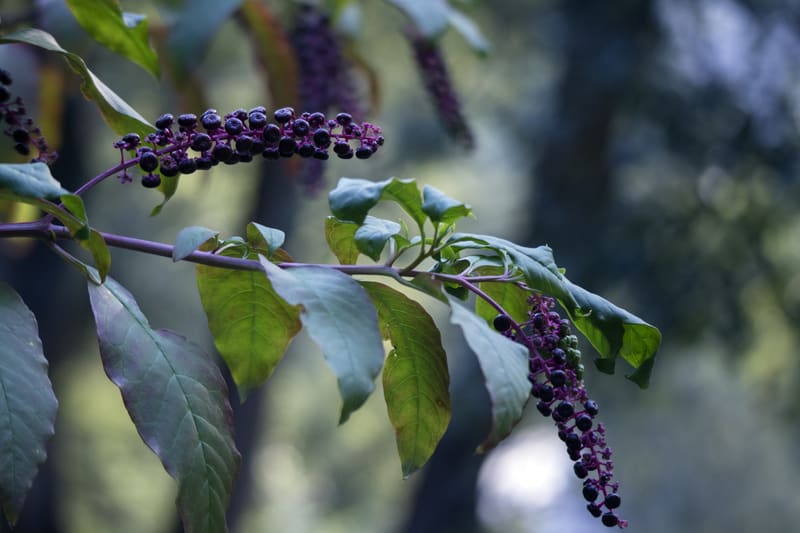
🌿 Morphology
🌞 Growing conditions
🌍 Origin and family
🌾 Uses
Warning: Despite the care taken in writing this sheet, it is essential to cross-reference sources before using or consuming any plant. When in doubt, consult a qualified professional
Permaculture uses
The berries contain saponins and are used as a natural soap and detergent. The leaves are edible when cooked, providing a source of nutrition. Extracts have insecticidal properties, making it useful in pest control. The plant can be used as a living fence or hedge due to its dense growth habit. Different cultivars exist, with variations in saponin content and growth characteristics.
Permapeople description
Phytolacca dodecandra, also known as endod, is a climbing shrub native to tropical Africa and Madagascar. It is used traditionally as a soap and also has molluscicidal properties, used to control snails that carry schistosomiasis. The plant's berries are poisonous if ingested directly but have been traditionally used after proper processing.
Botanical description
Phytolacca dodecandra is a vigorous, sprawling, deciduous climber or scrambling shrub that can reach heights of 10 meters. It has smooth, reddish-brown stems and alternate, ovate to lanceolate leaves. The flowers are small, greenish-white, and borne in racemes. The fruits are fleshy, round berries that turn from green to orange to dark purple when ripe. The plant is native to sub-Saharan Africa and parts of Yemen.
Companion planting
Information on specific companion planting relationships for Phytolacca dodecandra is limited. However, as a climbing vine, it may benefit from support structures provided by sturdy trees or shrubs. Avoid planting near sensitive crops, as the saponins released from the berries could potentially inhibit growth. More research is needed to determine optimal companion plants.
Propagation methods
Propagation can be achieved through seeds, stem cuttings, or root division. Seeds require scarification to improve germination rates. Cuttings should be taken from semi-hardwood stems in late spring or early summer. Root division is best performed in early spring or late fall.
History and traditions
Historically, Phytolacca dodecandra has been used in Africa as a traditional remedy for various ailments, including skin infections, intestinal worms, and malaria. The berries have long been used as a soap substitute, particularly in rural areas. In some cultures, the plant is associated with rituals and ceremonies.
Usage calendar
Flowering typically occurs during the rainy season. Berries ripen several months after flowering. Leaf harvesting for consumption is best done during active growth periods. Pruning is recommended after fruiting to maintain shape and vigor. Planting is best done at the beginning of the rainy season.
